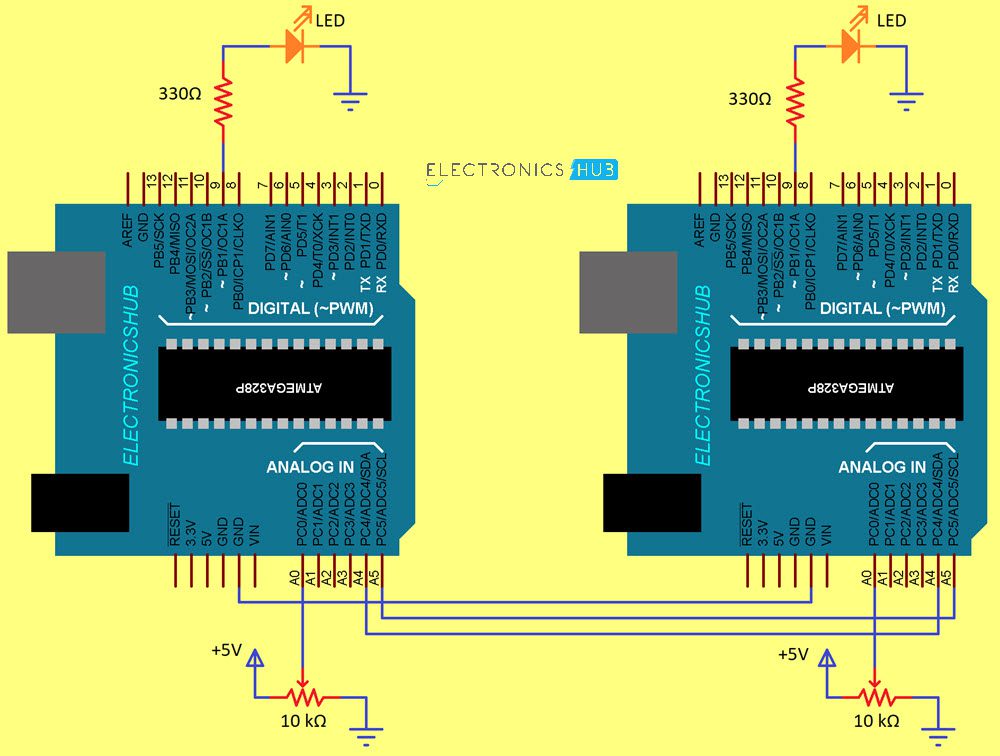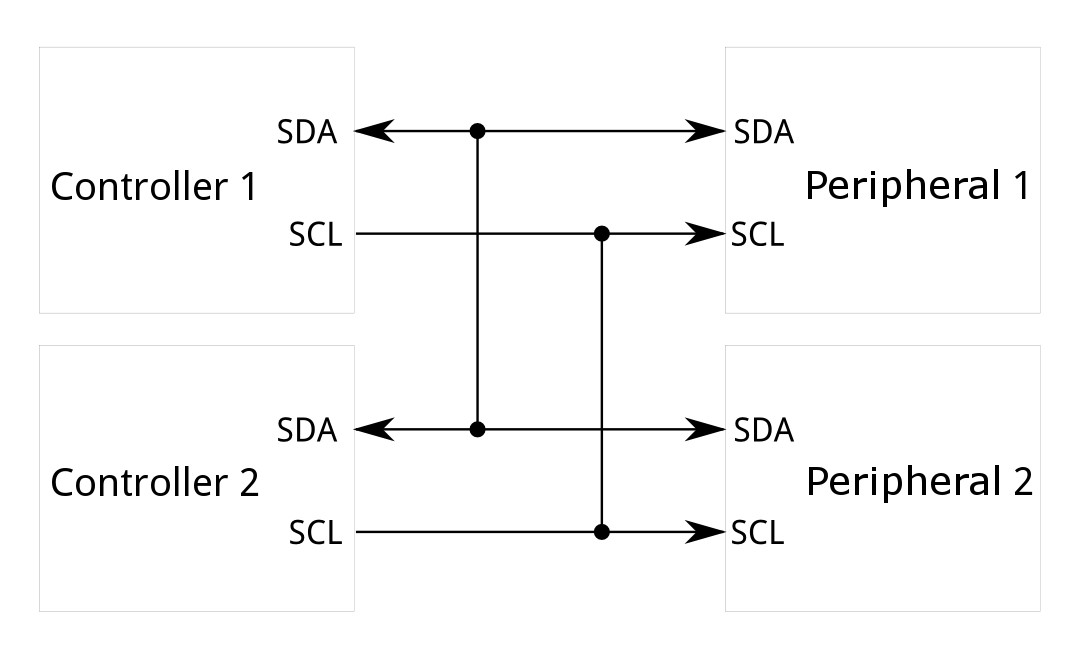

To know how to assign pins for the block, see Pin Mapping for Arduino Timer Independent Blocks. Click View pin map to open the Arduino Pin Mapping table. Using this block, you can also write data to a specific register on the I2C slave. Set_register(0X5A, ELE_CFG, 0x0C) // Enables all 12 Electrodes Write data to an I2C device on the Arduino hardware. Set ELE_CFG to 0x00 to return to standby mode

Section C - Sets touch and release thresholds for each electrode Section B - Controls filtering when data is < baseline. Wire.beginTransmission(0x5A) // select device with “beginTransmission()”
ARDUINO I2C EXAMPLE WRITE REGISTER CODE
I have a try with your code, and i think your code seems right, but the output data still begins from the first register:0x00.ĭigitalWrite(irqpin, HIGH) //enable pullup resistor Wire.write(0x04) // select starting register with “write()” Wire.beginTransmission(DEVICE_I2C_ADDRESS) // select device with “beginTransmission()” Register5= Wire.read() // read next byte from the following register Register4= Wire.read() // read from the starting register Wire.requestFrom(DEVICE_I2C_ADDRESS, 2) // select number of bytes to get from the device (2 bytes in this case) Wire.endTransmission() // end write operation, as we just wanted to select the starting register Wire.write(0x04) // select starting register with "write()" Next we send one bit 0 that indicates we want to read the value from the register 0.

Inside the function we start the transmission by using function beginTransmission () from the Wire object which needs the address of our sensor. dev register dataIn precision More About. In the code we use function readtemp () that returns an integer, in our case the temperature. Write to an I2C Device Register Specify Precision of Data to Write to an I2C Register Input Arguments. Wire.beginTransmission(DEVICE_I2C_ADDRESS) // select device with "beginTransmission()" MATLAB Support Package for Arduino Hardware I2C Devices writeRegister On this page Syntax Description Examples. Typical I2C read from a selected start register goes like that for reading two bytes from register 0x04 and 0x05: #define DEVICE_I2C_ADDRESS 0x5A // this must be the I2C bus address of your device You will have to select the register by using a write command. for example, the i2c slave's address is 0x5A, the code Wire.requestFrom(0x5A,2) can read two 8-bits data from slave 0x5A, from the register address ox01 and 0x02.īut i want to read data from register address ,such as ox04, directly? how should i do? To know more about the different arguments of these functions, and to know about the other important functions related to Wire, you can check the Arduino reference on Wire.The method Wire.requestFrom(address,numberofdata), the address is the slave's address, it is not the slave's register's address. Alternatively, if master transmitted bytes to a slave, this function on the slave will be used to read the bytes Wire.read() − If a master send requestFrom() to slave, then it will read the returned byte using this function. Wire.write(byte) − Queue bytes for transmission from master to slave, or write data from slave in response to request from master

Wire.SetClock(frequency) − Set the clock speed to frequency (in Hz) Wire.endTransmission() − End a transmission initiated by beginTransmission() Wire.beginTransmission(address) − Initiate transmission with the slave identified by address The important functions of this library are given below − The following pins are generally used for SPI −Īrduino has a built-in Wire library. Start/Stop sequence is required to signal start and end of communication If they want to send high level, they simply release the bus. two resistors pull the bus to a high level and the devices only send low levels. The data and clock lines are pulled up, i.e. The slave has to make sure that the next bit is ready when the clock pulse arrives If the master wants to receive the data, it only generates clock pulses. Thus a maximum of 127 slaves with unique addresses can be connected to a single master.Īfter each byte, the receiver must send a 0 to acknowledge the reception of the byte The first byte sent by the master contains a seven-bit address and a read/ write bit indicating whether the next bytes will come from the master or should come from the slave. The slaves are not selected via a slave select line, but via address bits. I2C is synchronous because it uses a clock. It uses only two lines: One for data (SDA) and one for clock (SCL). Arduino refers to I2C as Wire, which is a shorter form of the term Atmel uses (Two Wire Interface or TWI). It is a popular communication protocol used by several peripherals like accelerometer and gyroscopes, OLED Displays, etc.


 0 kommentar(er)
0 kommentar(er)
